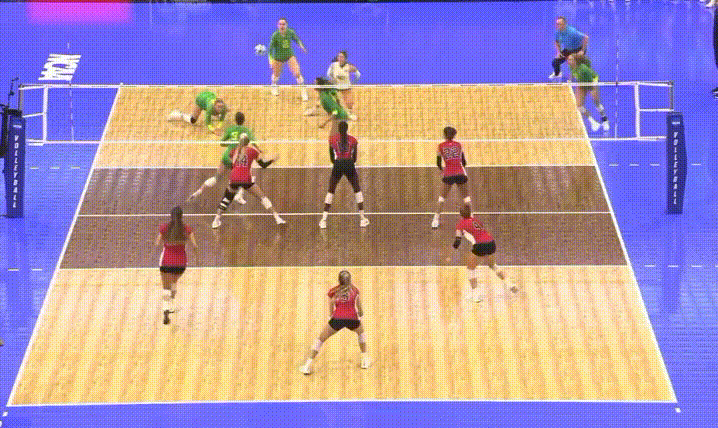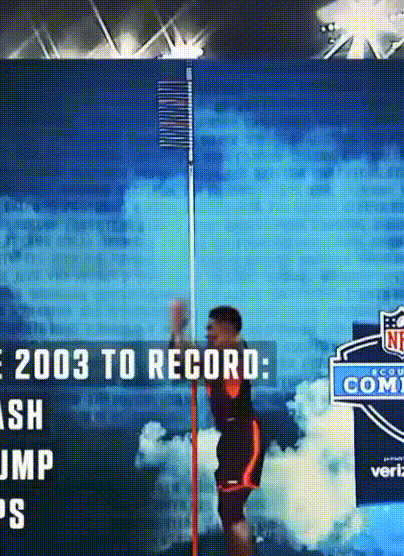I’ve enjoyed Tod and Davis, hosts of The Volleypod for a while now. I had an appearance on their pod last summer and maybe I’ll get them over for a SmarterVolley guest interview this summer. Right guys?!?
Anyway, I had an email back-and-forth with Tod where we were talking about developing spiking power in young kids and we thought we’d share it on SmarterVolley.
Tod asks:
After hearing the CYBO Ask Joe episodes, I have my own questions--
What are your thoughts on the double arm lift for beginners? Should it be emphasized, even when young girls are weak, and it can cause their arm prep to be late?
Should it be modified to a shorter, bent elbow motion?
Should it be modified to the arms moving out, rather than back? I just learned that Chuck Erbe is a proponent of this, though I'm not sure of the specifics. Is this an international thing?
If you believe in any such arm prep modification, are there other things I should be thinking about modifying as we are teaching 9-11 year old girls how to get better and enjoy the game as quickly as possible?
And my response:
All my double arm lift answers are about to be really boring because I wouldn't (*) modify it at all for beginners. I do see beginners capable of doing a full double-arm lift, so I wouldn't necessarily modify or change it or teach a "kid's version" of a spike. I think the mechanics of jumping are pretty clear that a long full backswing (not out but back) is the best way to produce vertical force.
and that synching it with the final right-left of the approach is the best way to produce maximum jumping power for a spiking motion.
THAT SAID, of course there's an asterisk here. And my asterisks are:
1. At 9-11 years of age I really don't care that much about the technique. So like, I would want them to know that this is probably the best way to jump high and spike hard and that most of the best players spike like this. But also, if you just get up in the air and take a swing, I'm not really going to be too concerned about how bent or straight your arms are, etc. Especially in a game situation where everything is going to be pretty chaotic anyway.
I really like self-toss hitting, mini-jump serve, etc.
And especially if you can put the net down a bunch so it can be a more realistic spiking motion rather than the "up-punch" method so commonly employed at that age. For me, the ideal is to spike on a net that's about as high as your standing reach. For 9-11 I've seen this be more like 6.5" feet or even a bit lower, but you might not have the capability to do that, depending on the net system.
For me, this is the time to really try to get some double-arm lift going. Get a little self-toss and coach toss on the lower net and you can try to get that technique down. And let's do our best to spike like that off a set, but also understand that things are going to degrade.
2. I also am a big fan of young kids just doing basic jump tests. I think you know I'm all about split-court doubles, and my favorite set up is to make them into 6 teams of 2-3 kids per team. Then you make up a little winners-stay-on games to 3 points or so. And every time you lose, you come off and you do... X. So X could be doing a pancake off a coach, because kids like to learn that. Or I'll give you some tosses for you to set or whatever. But something else I like to do is just a simple jump. For example, set up a few PVC hurdles off to the side. "Hey, every time you lose, come off and pick a hurdle and jump over it." Or do the same thing with a broad jump. Or if you have a vertec, or something where there's a height that's maybe just barely reachable, you just go over to the side and do a jump and see if you can touch it.
And when you do those jump tests, you'll often see kids start to use their arms to generate some lift and get a little more dynamic on these jumps. You can even coach it a little bit, and they'll often find that when they synch their arms with their jump a little better, they jump a little higher. Cool.
3. You know I'm a differential guy, so I also think it's perfectly fine to work with kids and say, "hey, here's some of the different ways you could try using your arms to jump and spike... you can keep them straight or you could bend them, you could go straight back or you could go out to the side..." and then have the kids mess around a little with some different ways to jump and spike. Kind of like what I talked about for passing on your podcast. I find when I do this stuff that (a) kids usually gravitate toward the "good" solution and (b) when they DON'T gravitate toward the "good" solution, it's because something is jacked up with them physically. Like... this kid gravitates toward an awkward passing posture because she is a really bad mover and doesn't know how to bend her body properly. I suppose one day I'll run into the (c) where some kid doesn't gravitate toward the "good" solution because they innovate some new and better way to move but... I think I'm going to be waiting a long time for that one.
What we want to steer them away from is bent arms:
Or arms going out:

So What Can We Do?
I included this as part of spring Friday Fitness series because the backswing is a critical part of generating jumping height and hitting power. I thought this discussion of youth hitting mechanics would be a good segue into how to develop good mechanics, particularly how to generate power in the backswing of the approach jump.
Keep reading with a 7-day free trial
Subscribe to Smarter Volley by Joe Trinsey to keep reading this post and get 7 days of free access to the full post archives.





